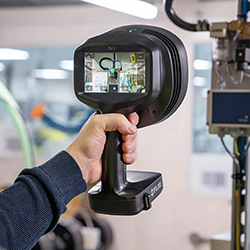Automate 2022 Exceeds Expectations with Largest Attendance and Exhibitor Count Ever
Sanitation Challenges Modern Manufacturers Face (and How to Fix Them)
Retooling Tomorrow's Manufacturing Workforce for a Safer, Digital Future
3 Ways Digital Transformation Is Changing the Industrial Sector for the Better
How Were Manufacturing Best Practices Disrupted by the Pandemic?
What is IoT Security?
AI Experts to Discuss How Artificial Intelligence is Powering Manufacturing at Automate 2022
Validation & Quality Control: Optimizing Micro Molding Outcomes
Metal 3D Printing Technology Landscape - IDTechEx Outline The Trends and the Whitespaces
Coping With Rising Energy Prices - Can Manufacturers Remain Profitable Against Energy Uncertainty?
Scaling Operational Excellence in the Oil and Gas Industry
The Critical Role of Metrology in Product Development - a Case Study
How VR and AR are Creating the Next Generation of Welders
Consumables Authentication: Why RFID Tags Are the Smart Option
Automate 2022 Product Preview
Records 601 to 615 of 1915
First | Previous | Next | Last
Engineering - Featured Product

